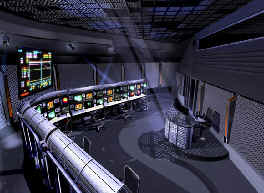|
|
|
AutomatedBuildings.com
|
[an error occurred while processing this directive] |
|
|
|
Skyrocketing energy costs have caused building owners and managers to start the search for energy savings. Company owners and managers scramble to find a solution as costs become astronomical. 2001 has brought with it what seems like an endless search for ways to realize true energy savings.
[an error occurred while processing this directive]Real energy cost savings programs require continuous management, which in turn requires continuous collection and analysis of energy usage. But how? One look at your energy bill and you'll see that therms and kilowatt hours don't come with "you can reduce me" tags.
The most urgent need in energy and building automation data collection is, in a word, simplification. Volumes of energy information are available today; the task at hand is how to turn NASA-like formulas and complex data into simple useful information. To be of value, energy information must be presented to the building owner and manager in uncomplicated terms that relate directly to his or her business. In this unregulated world, energy information must be presented clearly and simply in ways that allow building owners and managers to make the informed energy decisions that can affect their companies bottom line positively within an hour instead of within months.
It is a daunting task. Energy is a mixture of complex commodities used in sophisticated applications. Like other complex and sophisticated products, dealing with energy requires experienced and educated people. To effectively manage energy in-house, a company needs to add dedicated professionals to its overhead, including, at a minimum:
A graduate engineer with diverse past experience as a field technician and building engineer,
A talented IT network systems engineer with specialized software experience,
A software development engineer,
A controls expert who understands thoroughly the company's systems and sub-metering devices.
The Company that does this must also manage this team, instruct them on what information needs to be simplified, in what form, and how the company wants it presented so the building owner or manager can make critical decisions.
Sound expensive? It is! And that's not the worst part. The cardinal rule of successful business is "Focus on the core business and don't take your eyes off it". Managing an energy staff requires critical time senior management can't afford to waste. Day to day internal energy management forces a company to, in essence, "take your eyes off the core business".
But there is a solution: Out-Sourcing!
Company management may have looked outside of itself for help with energy monitoring. Unfortunately some over zealous sales people sell first and worry about producing later. And too often facility management tries the "shot gun" effect to energy savings by purchasing single energy savings systems. This technique, which considers only 10% - 20% of a buildings energy consumption systems, often leads to needless expense and minimal savings. An example of this is installing VSD and upgrading lighting (the low hanging fruit) without taking into consideration what effect phase imbalance will have and its ability, in fact, to increase energy consumption instead of reducing it. These dead ends leave building management feeling like there is no answer.
 Like
other professional services, energy administration can be successfully
out-sourced providing a company chooses qualified partners.
Like
other professional services, energy administration can be successfully
out-sourced providing a company chooses qualified partners.
How does a company pick such a critical alliance? Ask clear questions:
How will you physically get data from our facility?
What software programs will you use to communicate?
Do you need to build a network within our building?
Can we visit your monitoring facility and see it at work?
What format are you using to send information to me?
What will my web site look like?
What is the experience of the staff?
Ask questions and demand to visit each potential alliance's facility and see them in action!
Developing a qualified out-source vendor is almost always financially worth the effort, and energy management is no exception. A company should compare the cost for service in relation to keeping it in-house. Each company must be sure to identify potential additional savings that can be taken advantage of by out-sourcing, such as load-shedding and other utility incentive programs.
When analyzed, the direct cost of in-house energy monitoring and analysis is at least double out-sourced cost because:
A company is paying all the costs of full-time energy engineers and dedicated IT people.
Automation hardware and software is very expensive.
The real cost of internal management, direct and indirect.
Increased liability.
The down side of de-regulation today is that business must add a new cost line to address a mysterious area called "real time-energy control". Most companies have not needed a budget for this category during their utility-regulated past and do not have energy-knowledgeable staff in-place.
The upside is the very real opportunity to save money from better control and the utility incentive programs available today. And all this has an added benefit for the environment: reduced pollution and better conservation throughout the world as energy savings programs are implemented.
 No
matter what the cost of energy is now - or tomorrow - one thing is definite;
each day a company waits to find adequate energy control solutions, it costs
unrecoverable money and negatively affects the company's bottom line. Now is the
time to implement outsourced energy management. Research potential companies.
Ask questions. The time invested will reap its reward. Profit will once again go
into the company and out of the energy provider's pockets. It will not only be
one of the best investments in the business, but for the nation and the world as
well.
No
matter what the cost of energy is now - or tomorrow - one thing is definite;
each day a company waits to find adequate energy control solutions, it costs
unrecoverable money and negatively affects the company's bottom line. Now is the
time to implement outsourced energy management. Research potential companies.
Ask questions. The time invested will reap its reward. Profit will once again go
into the company and out of the energy provider's pockets. It will not only be
one of the best investments in the business, but for the nation and the world as
well.
About the Author:
Mark Moore has been a recognized leader
and innovator in professional energy services for over 20 years. He's founded
three energy service companies, pioneering needed services before others
realized their viability. Today he is Chairman & CEO of Ram Air Engineering,
Inc. and imonitorenergy.com, the
nation's first real-time energy monitoring facility.
[an error occurred while processing this directive]
[Click Banner To Learn More]
[Home Page] [The Automator] [About] [Subscribe ] [Contact Us]